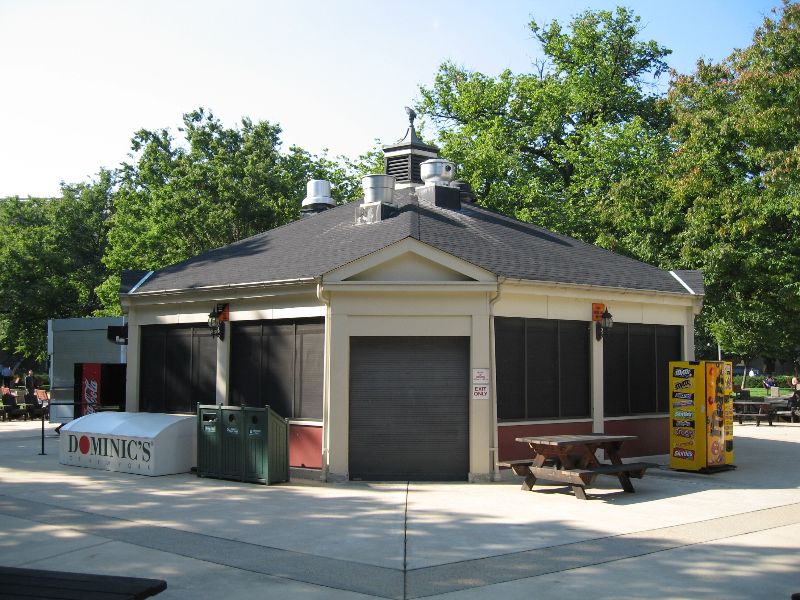The Cold War’s Most Important Hot Dog Stand

Pictured above is a hot dog stand that no longer exists. And that’s probably okay — if you were really hankering for a hot dog, you probably wouldn’t have been able to get one at that particular hot dog stand. Why? Because you probably couldn’t get there: the hot dog stand in the picture was located in Arlington County, Virginia, embedded inside the U.S. Department of Defense’s headquarters, better known as the Pentagon.
And if you could have gotten a hot dog there, maybe you didn’t want to, because it may have been the most dangerous hot dog stand in the world.
Mostly because the Soviets may have misunderstood what they saw.
The Cold War raged for more than 40 years, starting after World War II and ending with the fall of the Soviet Union in 1991. During that period, the United States and the USSR were on the precipice of an actual war, one that would have potentially involved nuclear weapons and mass destruction. Both of these nations, along with their allies, invested incredible amounts of money and time into espionage, hoping to better understand what their rivals and enemies were planning. And given that the Americans were planning all sorts of military activities at the Pentagon, it is widely assumed that the Soviets used spy satellites and similar tech to keep an eye on the building and its surroundings.
Most of those planning operations happened inside the building, of course, but the Pentagon’s design has an outdoor section as well — a courtyard in the center of the facility. And toward the center of the courtyard was the hot dog stand in question. On a nice day — and Virginia has pretty good weather — many a Pentagon employee would go to the hot dog stand (and it served more than just hot dogs) for lunch.
Which is what prompted the reported confusion. The Department of Defense’s website explained: “Reportedly, by using satellite imagery, the Soviets could see groups of U.S. military officers entering and exiting the hot dog stand at about the same time every day. They concluded that the stand was the entrance to an underground bunker. “
But it was no such thing — it was just a place to grab a bite.
The truth may not have mattered to the Russians, though. As We Are The Mighty reported, there was a longstanding rumor that “the Soviet Union had at least two nuclear missiles pointed at [the eatery] at all times,” ready to go in case of war. Continues We Are The Mighty, the Soviets “surmised it must be an important planning center or command and control bunker. So, obviously, when the war broke out, it would have to be one of the first things to go. Two ICBMs should take care of it.” The rumors earned the hot dog stand the name “Cafe Ground Zero” as a result.
The Soviets never did attack the cafe, and in fact, the cafe outlasted the USSR by nearly 15 years. But in 2006, the DOD tore it down and replaced it with a new facility, one that included indoor seating and breakfast service — but no secret bunker. (As far as we know.)
Bonus fact: The Pentagon has a lot of bathrooms, about twice as many as it needs today. At the time of its construction, racial segregation was required by Virginia law. This was in conflict with federal regulations at the time; FDR had issued an executive order barring racial discrimination by federal agencies. To meet the requirements of Virginia law, the Pentagon has a lot of bathrooms, but the bathrooms were never actually segregated. As Snopes explains, “signs marking ‘colored’ or “white” were never painted on the doors, possibly at the insistence of Roosevelt, who had signed the executive order banning discrimination in the federal government the previous summer.”
From the Archives: The Starbucks That Never Gets Your Name Wrong: The CIA’s cafe doesn’t mess that up — but not because they’re perfect.
